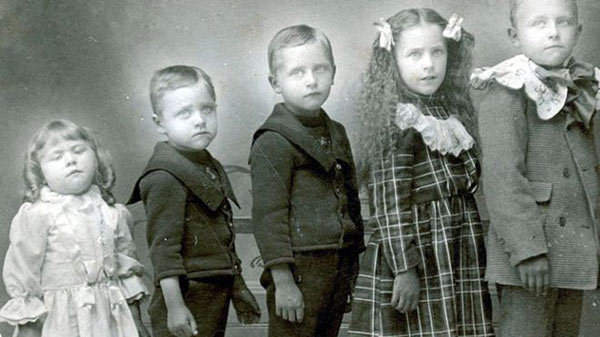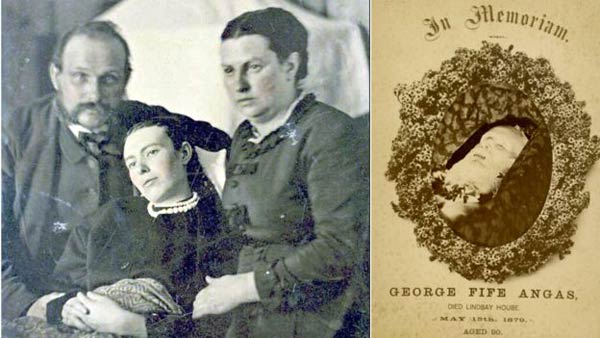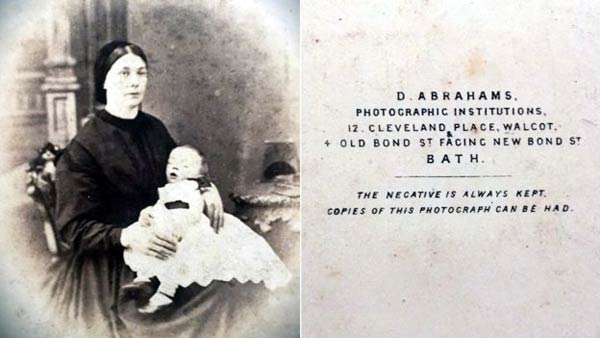當(dāng)前位置: Language Tips> 雙語新聞
Taken from life: The unsettling art of death photography
分享到

Photographs of loved ones taken after they died may seem morbid to modern sensibilities. But in Victorian England, they became a way of commemorating the dead and blunting the sharpness of grief.
或許在現(xiàn)代人眼中,為離世的摯愛拍照實(shí)屬詭異。不過在維多利亞時(shí)代的英國,這卻是一種緬懷故人,緩解悲傷的方式。
In images that are both unsettling and strangely poignant, families pose with the dead, infants appear asleep, and consumptive young ladies elegantly recline, the disease not only taking their life but increasing their beauty.
這些照片充滿了不安,畫面異常感傷。家人與逝者一同拍照,嬰兒看上去就像進(jìn)入了夢鄉(xiāng),患病的年輕女士優(yōu)雅地斜躺著,疾病雖然奪走了逝者的生命,卻增添了別樣的美。


Victorian life was suffused with death. Epidemics such as diphtheria, typhus and cholera scarred the country, and from 1861 the bereaved Queen made mourning fashionable.
維多利亞時(shí)代的人民飽受死神的折磨。流行病(白喉、傷寒、瘧疾)肆虐全國。從1861年開始,守寡的年輕女王就掀起了一場悼念風(fēng)尚。
Trinkets of memento mori - literally meaning "remember you must die" - took several forms, and existed long before Victorian times. Locks of hair cut from the dead were arranged and worn in lockets and rings, death masks were created in wax, and the images and symbols of death appeared in paintings and sculptures.
象征著“記住人必有一死”的紀(jì)念品早在維多利亞時(shí)代之前就流傳已久了。剪下逝者的頭發(fā),珍藏在吊墜里或鑲嵌在戒指中,或用蠟為逝者鑄造面具,抑或在繪畫與雕塑中采用死亡的意象。
But in the mid-1800s photography was becoming increasingly popular and affordable - leading to memento mori photographic portraiture.
不過,隨著19世紀(jì)中期攝影技術(shù)的流行,攝影成本的降低,為逝者拍攝肖像留作紀(jì)念的做法也逐漸流行起來。
The first successful form of photography, the daguerreotype - a small, highly detailed picture on polished silver - was an expensive luxury, but not nearly as costly as having a portrait painted, which previously had been the only way of permanently preserving someone's image.
首個(gè)成功的照相方式是銀版照相法(在拋光的銀板上拍攝出影像細(xì)膩的照片),銀版照相盡管被看成是一種奢侈品,但它遠(yuǎn)不及畫一幅肖像畫那般昂貴,而肖像畫曾是永久保存某人形象的唯一途徑。
As the number of photographers increased, the cost of daguerreotypes fell. Less costly procedures were introduced in the 1850s, such as using thin metal, glass or paper rather than silver.
隨著攝影師越來越多,銀版照相的費(fèi)用也相應(yīng)降低。19世紀(jì)50年代,銀版照相采用了成本更低的拍攝用具,如使用薄金屬、玻璃或紙來代替銀板。
Death portraiture became increasingly popular. Victorian nurseries were plagued by measles, diphtheria, scarlet fever, rubella - all of which could be fatal.
后來,給死人照相日漸普遍。在維多利亞女王時(shí)代,多家幼兒園的小孩兒染上了麻疹、白喉、猩紅熱、風(fēng)疹等致命疾病。
It was often the first time families thought of having a photograph taken - it was the last chance to have a permanent likeness of a beloved child.
那時(shí),這往往是家人第一次想要給孩子照相,也是他們最后一次給心愛的孩子拍攝一張永久的照片。
But as healthcare improved the life expectancy of children, the demand for death photography diminished.
不過,后來,良好的醫(yī)療條件延長了孩子們的平均壽命,因此,給死人照相的需求有所減少。
The advent of snapshots sounded the death knell for the art - as most families would have photographs taken in life.
快照的面世等于給死亡攝影藝術(shù)敲響了喪鐘,因?yàn)榇蠖鄶?shù)家庭都可以在生活中拍攝很多照片。
Now, these images of men, women and children stoically containing their grief in order to preserve the likeness of a taken-too-soon loved one, continue to live up to their name.
照片中的男人女人和孩子堅(jiān)忍地克制著哀傷,沒有表露出悲慟的情緒,因?yàn)榧胰藗兿胍煤玫嘏囊粡堈掌肋h(yuǎn)保留早逝的死者的音容相貌。如今這些照片依然踐行著它們的使命。
Memento mori: remember, you must die.
死亡警告:謹(jǐn)記,人必有一死。
Vocabulary
morbid: 病態(tài)的
consumptive: 患肺結(jié)核的
bereaved: 喪失親人的
memento mori: 死的警告
daguerreotype: 銀版照相法
snapshot: 快照
advent: 到來;出現(xiàn)
death knell: 喪鐘
stoically: 堅(jiān)忍地
英文來源:BBC
譯者:Lanxin(中國日報(bào)網(wǎng)愛新聞iNews譯者)
審校&編輯:丹妮
上一篇 : 檸檬七大妙用你知道嗎?
下一篇 : 面試時(shí)招聘官到底在想啥?
分享到
關(guān)注和訂閱


關(guān)于我們 | 聯(lián)系方式 | 招聘信息
電話:8610-84883645
傳真:8610-84883500
Email: languagetips@chinadaily.com.cn